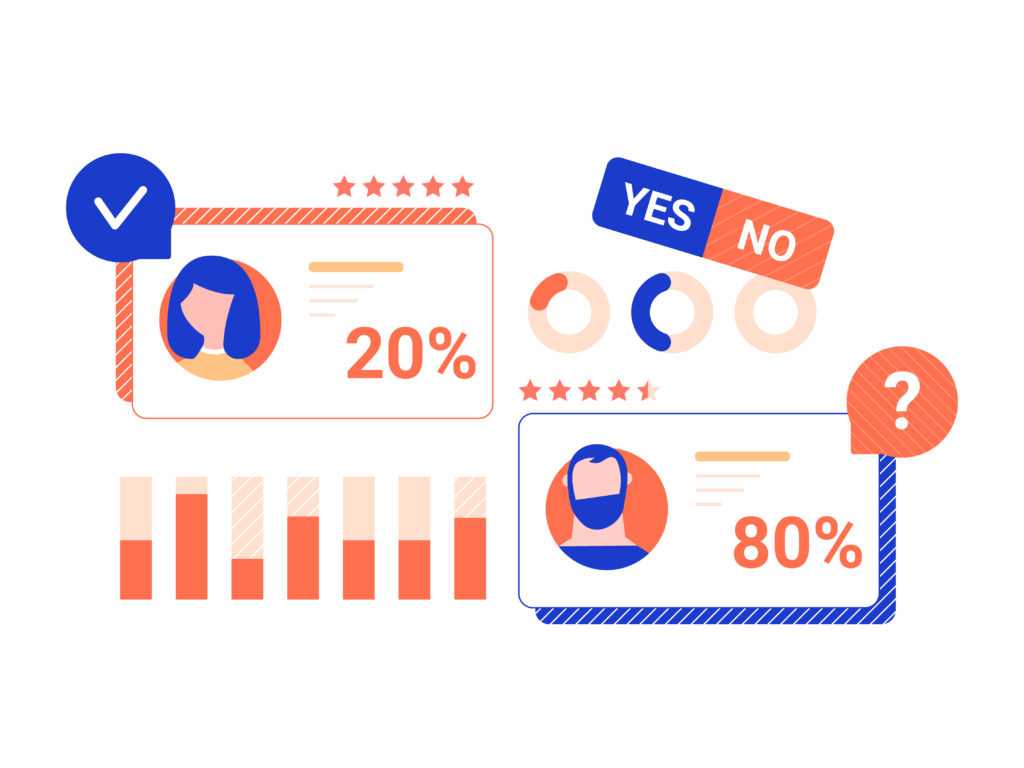One of the first steps in creating your video marketing strategy is figuring out exactly who you want your videos to reach. This is no easy task — you likely have a target audience in mind, but maybe not in practice. Will this audience give you the best return on investment? Is your product’s buyer persona the same as your video’s target audience? What if you’ve tried reaching this audience before to no avail?
Because it’s such an important step in crafting the perfect video, it’s crucial you get your audience targeting right. It takes research and planning, so we’ve outlined a few questions you need to ask in order to figure out how to reach the right people.

1. Who is your product or service for?
Hopefully, you know this much already. Most companies, big and small, have a clear buyer’s persona laid out for their product or service (or even multiple personas). This is a highly detailed portrait of who your customer is: their age, occupation, hobbies, interests, marital status, daily challenges, short-term and long-term goals, and more, along with how your product or service could help them in their everyday lives.
If your company doesn’t have a clear buyer’s persona, now is the time to create one. But don’t pull a persona out of thin air. Start by doing the proper research and identifying their exact character traits.
- Comb through your contacts list and try to uncover any trends.
- Do some focus group research to see who is using your product or service.
- Track your content to get an idea of what topics are most read and engaged with.
- Talk to your sales people or customer service agents to see who is calling in and what questions they’re asking.
Depending on your company or industry, you may have other sources of information, like lead forms, registration information, retargeting information, and more. Use whatever sources you have available to gain all the information you can.

Once you have research at your disposal, you can start putting together your buyer’s persona. Be sure to answer all of the following:
- Persona Name: This is how your persona will be referred to, and usually includes an identifier and first name.
- Demographic Information: Include age, gender, location, and income.
- Personality Details: What does this person read or watch? What are their hobbies? Where do they shop? Answer everything you possibly can to describe their personality and interests.
- Challenges: Consider the daily challenges faced by this persona.
- Resolution: Why would this person be interested in your product? How does your product solve their problems? What would keep them from purchasing your product? Use this to tie together your product and your consumer.
You may have more than one persona — that’s totally OK! The reality is there probably isn’t just one type of person who needs your services. But you want to try your best to cover every major type of consumer who might seek you out. Don’t create hundreds of personas, just enough to cover your primary consumers.
Then, you can move on to the next step.

2. What’s the purpose of your video?
Do you want to attract new customers? Delight your current customers? Do you want to communicate important news to your employees?
The purpose of your video is what will dictate a large part of who your audience is.
If you’re trying to attract new customers in order to make a sale, you’ll want to try targeting a broader group of people. At this stage of the marketing funnel, you should be focused on informing consumers about the problem they face and introducing your brand. Because you’re at the top of the funnel, you’ll want to cast out the largest net in order to catch the most interest. Use your buyer’s persona here as a guide, but don’t feel too restricted by it.
If your video’s purpose is to engage prospects or nurture leads, you’ll have a clearer picture of your target audience. They’ll be more closely aligned to your buyer’s persona. You can now speak to their specific traits: their pain points, their background, their interests, and more.
If your goal is to delight your customers, you’ll have the most information available about your target audience. You’ll know they already converted and currently own your product or service. By now, you’ll know their biggest challenge and will have hopefully solved it for them. Your audience should be totally in your corner and easily reached.
Or your video’s purpose could be entirely different. Maybe you want to communicate with employees, with executives, or with other branches within your organization about an updated product or process. Again, this should give you a really clear picture of who your audience is. Internal communication will usually not rely on your buyer’s persona.

3. How can you reach your target audience?
If you’re communicating internally, creating video for specific clients, or otherwise creating a video not meant for anyone in the purchase funnel, finding your audience should be pretty easy.
Any other video, though, reaching your audience can be tougher.
This is where that research you did earlier in the process can also come in handy. Your audience likely has a preferred method of communication: email, search, social media, forums, you name it. Include this character trait in your research.
Age is one of the largest indicators of preferred marketing platform. For instance, older audiences use Facebook more than millennials. Younger audiences, on the other hand, rely on visual data more than older audiences, preferring Instagram and Snapchat.

Figure out where your target audience hangs out. Email is great because it means that user has already shown an interest in your brand, but this may not be the best method of attracting new customers. If you want to reach an entirely new audience, make sure the page that hosts your video has great SEO. If you’re hosting on a site like Youtube or Vimeo, you may want to look into paid advertising in order to reach more eyes.
Luckily, you can track performance on most platforms and use advanced targeting to narrow down who sees your content. Facebook, for instance, has amazingly specific audience targeting. Although search marketing doesn’t target specific personas, it does target very specific keywords, so you can still narrow down your content by audience intent.

Final Thoughts
Remember: No single character trait will dictate where to promote your video. Use a combination of all the information you have — buyer’s persona, your goals, your current marketing efforts, and more — to formulate a plan for reaching your target audience.
Never embark on creating a video without first figuring out exactly who your target audience is.
Chances are you’ve already done most of the work. And, with a target audience specified, you can reap greater rewards, including more views, more impressions, better engagement, and ultimately, more sales.
Still feel like you need a little bit of help? Our creative producers can help you not just outline your proper audience and distribution channels, but really help you create the video you’ve always wanted.
The post How Do You Find the Target Audience for Your Brand Videos? appeared first on Lemonlight.
* This article was originally published here

